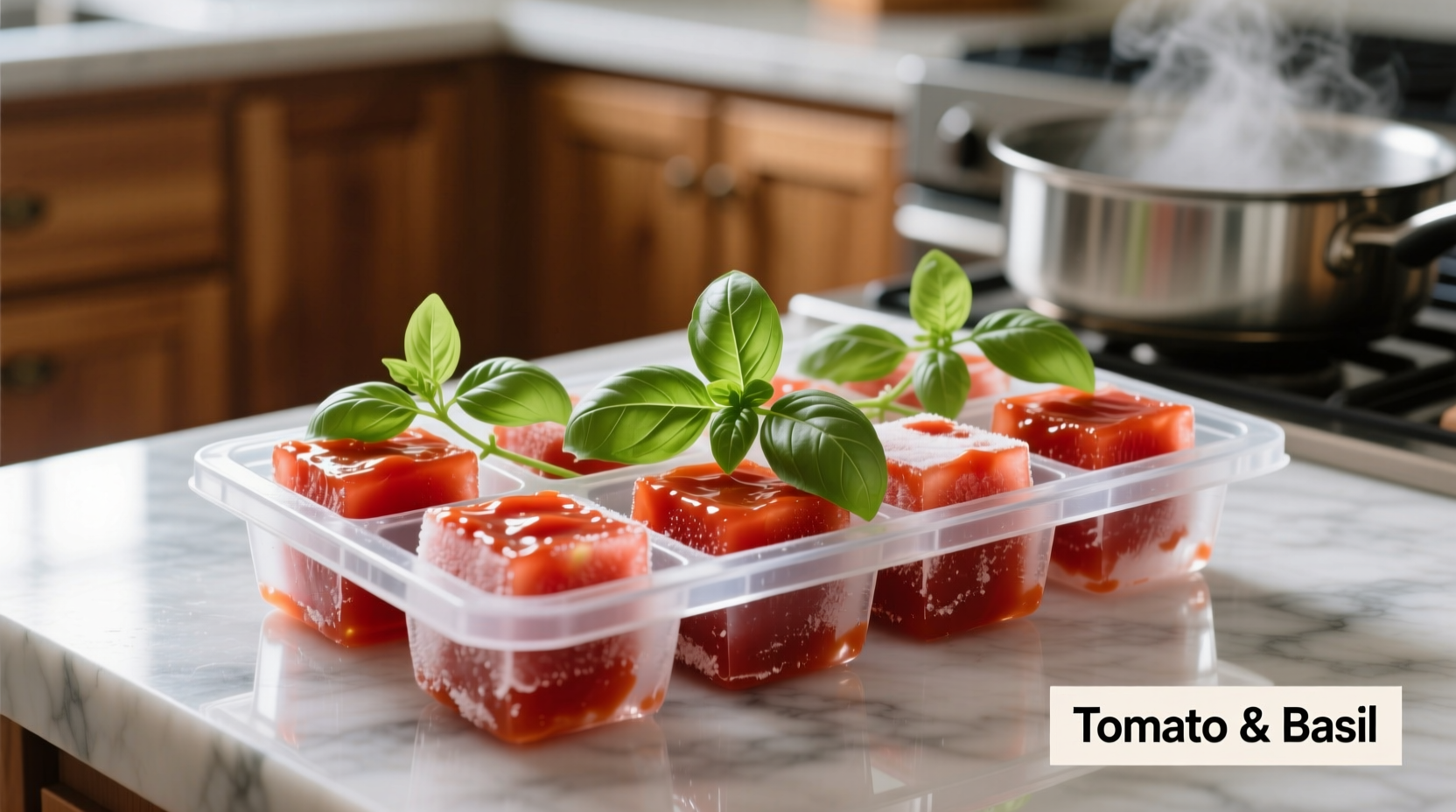Tomato paste often sits half-used in your refrigerator, slowly spoiling while you wonder what to make with the remainder. This concentrated tomato product packs intense umami flavor that forms the foundation of countless global cuisines, yet many home cooks underutilize its potential. Our guide reveals how to maximize every ounce with chef-tested techniques and seven practical recipes ranging from weeknight dinners to special occasion dishes.
Why Tomato Paste Deserves a Prime Spot in Your Pantry
Unlike canned tomatoes or tomato sauce, tomato paste undergoes extended cooking that removes 80% of its water content, concentrating natural sugars and acids while developing complex caramelized notes. This reduction process creates a flavor intensity that elevates sauces, stews, and braises with minimal volume. Registered dietitians confirm that this concentration also boosts lycopene content—the antioxidant responsible for tomatoes' health benefits—by up to 160% compared to fresh tomatoes (USDA FoodData Central, 2023).
| Tomato Product | Solids Content | Best Culinary Use |
|---|---|---|
| Tomato paste | 24-30% solids | Flavor base, sauce thickening |
| Tomato sauce | 8-12% solids | Ready-to-use sauces |
| Crushed tomatoes | 8-10% solids | Chunky sauces, soups |
This comparison shows why substituting products leads to texture and flavor issues. Tomato paste's high solids content makes it ideal for building foundational flavors without excess liquid.
Mastering Storage: Prevent Waste with Professional Techniques
Improper storage causes most tomato paste waste. The USDA recommends specific protocols for preserving opened tomato products. When stored correctly, tomato paste maintains quality for these durations:
- Refrigerated (original can): 5-7 days (transfer to airtight container immediately after opening)
- Refrigerated (portioned): 10-14 days when stored in small portions with oil barrier
- Frozen (ice cube tray method): 6-8 months at 0°F (-18°C) or below
Professional chefs use the ice cube tray technique: portion paste into 1-tablespoon increments, freeze solid, then transfer cubes to labeled freezer bags. This method prevents freezer burn while providing ready-to-use portions. The National Center for Home Food Preservation confirms that freezing maintains nutritional integrity better than refrigeration for tomato products.

Essential Cooking Techniques for Maximum Flavor
Many home cooks simply stir tomato paste into dishes without proper preparation, missing opportunities for flavor development. Professional kitchens employ these critical techniques:
The Maillard Reaction Method
Cook paste in oil for 3-5 minutes until it darkens slightly and separates from the oil. This triggers the Maillard reaction, creating complex umami compounds. As Antonio Rodriguez explains, "When tomato paste reaches 285°F (140°C), its natural sugars caramelize while amino acids transform, producing over 30 new flavor compounds."
Acid Balance Principle
Add ¼ teaspoon baking soda per 2 tablespoons of paste to neutralize excessive acidity without compromising flavor. This technique works particularly well with older tomato paste that has developed sharper notes during storage.
7 Practical Tomato Paste Recipes for Real Kitchens
1. 20-Minute Mediterranean Shakshuka (Weeknight Solution)
This North African breakfast favorite transforms leftover tomato paste into a protein-packed meal. The concentrated flavor stands up to the eggs without watering down the sauce.
Ingredients:
- 2 tbsp tomato paste
- 1 bell pepper, diced
- 1 small onion, finely chopped
- 2 garlic cloves, minced
- 4 large eggs
- ½ tsp cumin
- Fresh cilantro for garnish
Method:
- Sauté onions and peppers until soft (5 minutes)
- Add tomato paste and cook using Maillard method until brick-red
- Stir in spices and ¼ cup water to create sauce base
- Create wells and crack eggs into them
- Cover and cook until eggs reach desired doneness
2. Freezer-Friendly Bolognese Sauce (Meal Prep Essential)
This adaptation of the classic Italian ragù uses tomato paste as the flavor foundation rather than canned tomatoes, creating a richer base that freezes exceptionally well.
Pro Tip: Freeze in portioned containers matching your typical pasta servings for instant meals.
3. Smoky Chipotle Tomato Soup (Pantry Rescue)
Transform basic pantry items into a restaurant-quality soup using just 1 tablespoon of tomato paste per serving. The paste provides depth that compensates for the absence of fresh tomatoes.
Troubleshooting Common Tomato Paste Problems
Even experienced cooks encounter issues with tomato-based sauces. Here's how to fix them:
Bitter Sauce Solution
If your sauce tastes metallic or bitter:
- Add 1 teaspoon honey or maple syrup per cup of sauce
- Stir in ¼ cup grated carrot while cooking (natural sweetness balances acidity)
- Include a Parmesan rind during simmering (umami compounds neutralize bitterness)
Texture Troubleshooting
For sauces that are either too thin or too thick:
- Too thin: Simmer uncovered to reduce, or add tomato paste 1 tsp at a time
- Too thick: Whisk in small amounts of pasta water or stock, not plain water
When Tomato Paste Isn't the Right Choice
Understanding context boundaries prevents recipe failures. Use alternatives when:
- You need fresh tomato flavor (choose diced tomatoes)
- Creating cold sauces like gazpacho (use tomato water instead)
- When recipe requires distinct tomato chunks (crushed tomatoes work better)
Tomato paste shines when you need concentrated flavor without excess moisture—perfect for braises, thick sauces, and flavor bases. Recognizing these boundaries ensures optimal results in your cooking.
Expand Your Culinary Toolkit
Mastering tomato paste usage unlocks professional cooking techniques accessible to home chefs. By implementing proper storage methods, understanding flavor development principles, and applying context-appropriate recipes, you'll transform this humble pantry item into the foundation of countless delicious meals. The key lies in respecting tomato paste's concentrated nature—using it as a flavor catalyst rather than a primary ingredient—and adjusting techniques based on your specific culinary goals.











 浙公网安备
33010002000092号
浙公网安备
33010002000092号 浙B2-20120091-4
浙B2-20120091-4